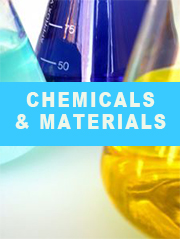Report overview
Paraformaldehyde is a white crystalline solid formed by polymerization of formaldehyde. It is used to make various resins with mainly phenol (melamine resin; phenol resin; vinylon; polyacetal resin; terephthalic acid; diphenyl methane diisocyanate, acrylic acid esters). Paraformaldehyde is also mainly used in (1) Pesticides: synthesis of acetochlor, butachlor, and glyphosate; (2) Medicine and pharmaceutics: produce vitamin A; (3) Coatings: synthesis of high grade automobile paint.
This report aims to provide a comprehensive presentation of the global market for Paraformaldehyde, with both quantitative and qualitative analysis, to help readers develop business/growth strategies, assess the market competitive situation, analyze their position in the current marketplace, and make informed business decisions regarding Paraformaldehyde. This report contains market size and forecasts of Paraformaldehyde in global, including the following market information:
Global Paraformaldehyde Market Revenue, 2018-2023, 2024-2029, ($ millions)
Global Paraformaldehyde Market Sales, 2018-2023, 2024-2029, (K MT)
Global top five Paraformaldehyde companies in 2022 (%)
The global Paraformaldehyde market was valued at US$ 546.3 million in 2022 and is projected to reach US$ 710.6 million by 2029, at a CAGR of 3.8% during the forecast period. The influence of COVID-19 and the Russia-Ukraine War were considered while estimating market sizes.
Global paraformaldehyde key players include Ercros, Celanese, Merck, Chemanol, etc. Global top 5 manufacturers hold a share over 50%.
China is the largest market, with a share over 40%, followed by Japan and Europe, both have a share over 27% percent.
We surveyed the Paraformaldehyde manufacturers, suppliers, distributors and industry experts on this industry, involving the sales, revenue, demand, price change, product type, recent development and plan, industry trends, drivers, challenges, obstacles, and potential risks.
Total Market by Segment:
Global Paraformaldehyde Market, by Type, 2018-2023, 2024-2029 ($ Millions) & (K MT)
Global Paraformaldehyde Market Segment Percentages, by Type, 2022 (%)
PF(91% ? 93% )
PF(95% ? 97% )
Global Paraformaldehyde Market, by Application, 2018-2023, 2024-2029 ($ Millions) & (K MT)
Global Paraformaldehyde Market Segment Percentages, by Application, 2022 (%)
Agriculture
Resins and Adhesives
Paint and Paint
Others
Global Paraformaldehyde Market, By Region and Country, 2018-2023, 2024-2029 ($ Millions) & (K MT)
Global Paraformaldehyde Market Segment Percentages, By Region and Country, 2022 (%)
North America
US
Canada
Mexico
Europe
Germany
France
U.K.
Italy
Russia
Nordic Countries
Benelux
Rest of Europe
Asia
China
Japan
South Korea
Southeast Asia
India
Rest of Asia
South America
Brazil
Argentina
Rest of South America
Middle East & Africa
Turkey
Israel
Saudi Arabia
UAE
Rest of Middle East & Africa
Competitor Analysis
The report also provides analysis of leading market participants including:
Key companies Paraformaldehyde revenues in global market, 2018-2023 (Estimated), ($ millions)
Key companies Paraformaldehyde revenues share in global market, 2022 (%)
Key companies Paraformaldehyde sales in global market, 2018-2023 (Estimated), (K MT)
Key companies Paraformaldehyde sales share in global market, 2022 (%)
Further, the report presents profiles of competitors in the market, key players include:
Ercros
Celanese
CCP
Merck
Chemanol
Caldic
Shandong Tuobo
LCY Chemical
Yinhe Chemical
Nantong Jiangtian
Wanhua Chemical
LINYI TAIER
Shouguang Xudong
Xiangrui Chemical
Chang Chun Group
Hebei Jintaida Chemical Co., Ltd.
Outline of Major Chapters:
Chapter 1: Introduces the definition of Paraformaldehyde, market overview.
Chapter 2: Global Paraformaldehyde market size in revenue and volume.
Chapter 3: Detailed analysis of Paraformaldehyde manufacturers competitive landscape, price, sales and revenue market share, latest development plan, merger, and acquisition information, etc.
Chapter 4: Provides the analysis of various market segments by type, covering the market size and development potential of each market segment, to help readers find the blue ocean market in different market segments.
Chapter 5: Provides the analysis of various market segments by application, covering the market size and development potential of each market segment, to help readers find the blue ocean market in different downstream markets.
Chapter 6: Sales of Paraformaldehyde in regional level and country level. It provides a quantitative analysis of the market size and development potential of each region and its main countries and introduces the market development, future development prospects, market space of each country in the world.
Chapter 7: Provides profiles of key players, introducing the basic situation of the main companies in the market in detail, including product sales, revenue, price, gross margin, product introduction, recent development, etc.
Chapter 8: Global Paraformaldehyde capacity by region & country.
Chapter 9: Introduces the market dynamics, latest developments of the market, the driving factors and restrictive factors of the market, the challenges and risks faced by manufacturers in the industry, and the analysis of relevant policies in the industry.
Chapter 10: Analysis of industrial chain, including the upstream and downstream of the industry.
Chapter 11: The main points and conclusions of the report.
